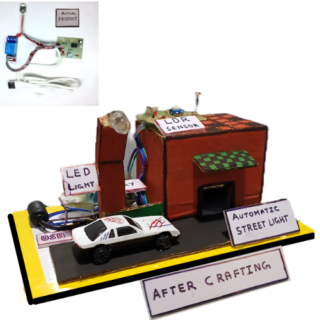Tag: reverse current
Reverse Current Protection with Relays: Safeguard Your Circuits
The Problem : When working with DC circuits, reverse current can damage sensitive components by allowing current to flow in the wrong direction. This often happens when power supplies or batteries are connected backward. Fortunately, reverse current protection using relays is a simple and effective fix. The Solution : A relay acts …
Reverse Current Protection with Relays: Safeguard Your CircuitsRead More
Reverse Current Protection for Batteries: A Simple Guide
Reverse current is a common issue in battery-powered circuits where current flows back into the battery when the power source is disconnected or reversed. This can damage batteries, lead to overheating, or even cause a short circuit. Fortunately, you can prevent reverse current easily using a Schottky diode or a P-channel MOSFET in your circuit. …
Reverse Current Protection for Batteries: A Simple GuideRead More
Reverse Current Protection in Chargers: A Simple Guide for Electronics Hobbyists
The Problem : When working with chargers, one common issue is reverse current flow—when power flows backward through the circuit. This can cause damage to sensitive components like diodes, transistors, or even your charger itself. In simple terms, it’s like trying to push water through a pipe the wrong way—it just doesn’t work and …
Reverse Current Protection in Chargers: A Simple Guide for Electronics HobbyistsRead More
Reverse Current Protection for Solar Panels
The Problem : When working with solar panels, one issue that hobbyists and engineers often face is reverse current flow. This happens when the power generated by the solar panels is sent back into the system incorrectly, potentially damaging the components. This can occur if the battery or power storage unit is fully charged …
Reverse Current Protection for USB-C: A Simple Solution for Electronics Projects
USB-C has become the go-to connector for modern electronics, offering fast data transfer and power delivery. However, a common issue in USB-C circuits is reverse current flow, which can cause damage to your components or lead to system failure. This happens when power flows in the opposite direction from what was intended, often when a …
Reverse Current Protection for USB-C: A Simple Solution for Electronics ProjectsRead More
Reverse Current Protection in LED Drivers – A Simple Guide for Hobbyists & Engineers
When designing circuits, especially for LED drivers, one common issue you might encounter is reverse current. This happens when current flows in the wrong direction, potentially damaging components like LEDs or drivers. In this post, we’ll explain how reverse current protection works and show you how to fix this issue in simple terms. The …
Reverse Current Protection in LED Drivers – A Simple Guide for Hobbyists & EngineersRead More
Reverse Current Blocking Techniques for Electronics Hobbyists and Engineers
Reverse current flow in circuits can cause significant damage to components, affecting the performance of your projects. Essentially, when current flows in the wrong direction, it can burn out sensitive parts like LEDs, transistors, or even power supply circuits. But don’t worry—there are simple and effective techniques to prevent this! The Problem : …
Reverse Current Blocking Techniques for Electronics Hobbyists and EngineersRead More
Reverse Current Protection in Battery Circuits
When working with battery circuits, one common issue that hobbyists and engineers face is reverse current flow. This occurs when current flows backward into the battery, potentially damaging the battery and other components in the circuit. Thankfully, there’s an easy fix: reverse current protection. The Problem : In simple terms, reverse current happens …


